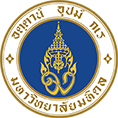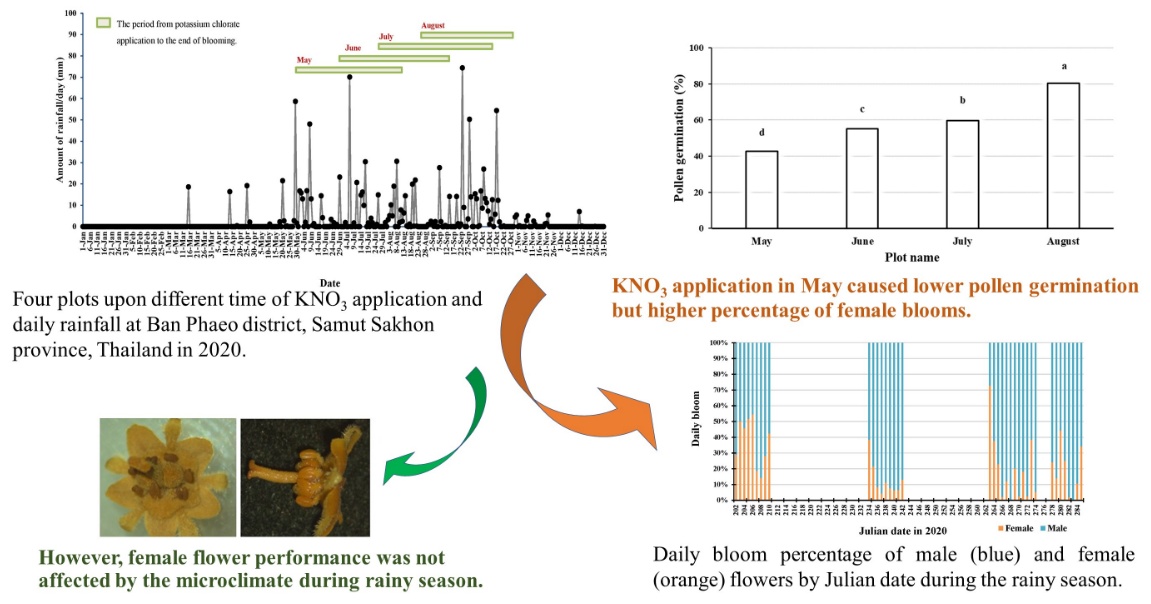Phyu Phyu Aung, Nareenart Traisuwan, Watcharra Chintakovid, Tatpong Tulyananda, and Aussanee Pichakum*
Published Date : October 30, 2023
Full article : click
Abstract Rainy season is an obstruction for efficient off-season longan production in Thailand. In this experiment, the bloom performances of off-season ‘Phuang Thong’ longan as affected by microclimate in a private longan orchard at Ban Phaeo district, Samut Sakhon province was evaluated during the rainy season of 2020. This study focused on the reproductive development at four different times (plots) of potassium chlorate application: May, June, July, and August. Air temperature, relative humidity and light intensity at the canopy level were recorded. Rainfall data was obtained from the Meteorological Department of Thailand. The results showed that inflorescence length, female flower number, and sex ratio of female to male of the May plot were the highest compared to other plots, and it was associated with early rainfall occurrence during flower development and blooming time. The August plot had a low growing degree day and a short flowering period, which coincided with frequent rainfall during the flower development period. However, the pollen viability and female flower characters were unaffected by environment. In conclusion, flower induction in the early rainy season, especially in May, was an effective time for the production of off-season ‘Phuang Thong’ longan in Ban Phaeo district, Samut Sakhon province, Thailand.
Keywords: Floral biology, Flower, Pollen, Microclimate, Heat unit

